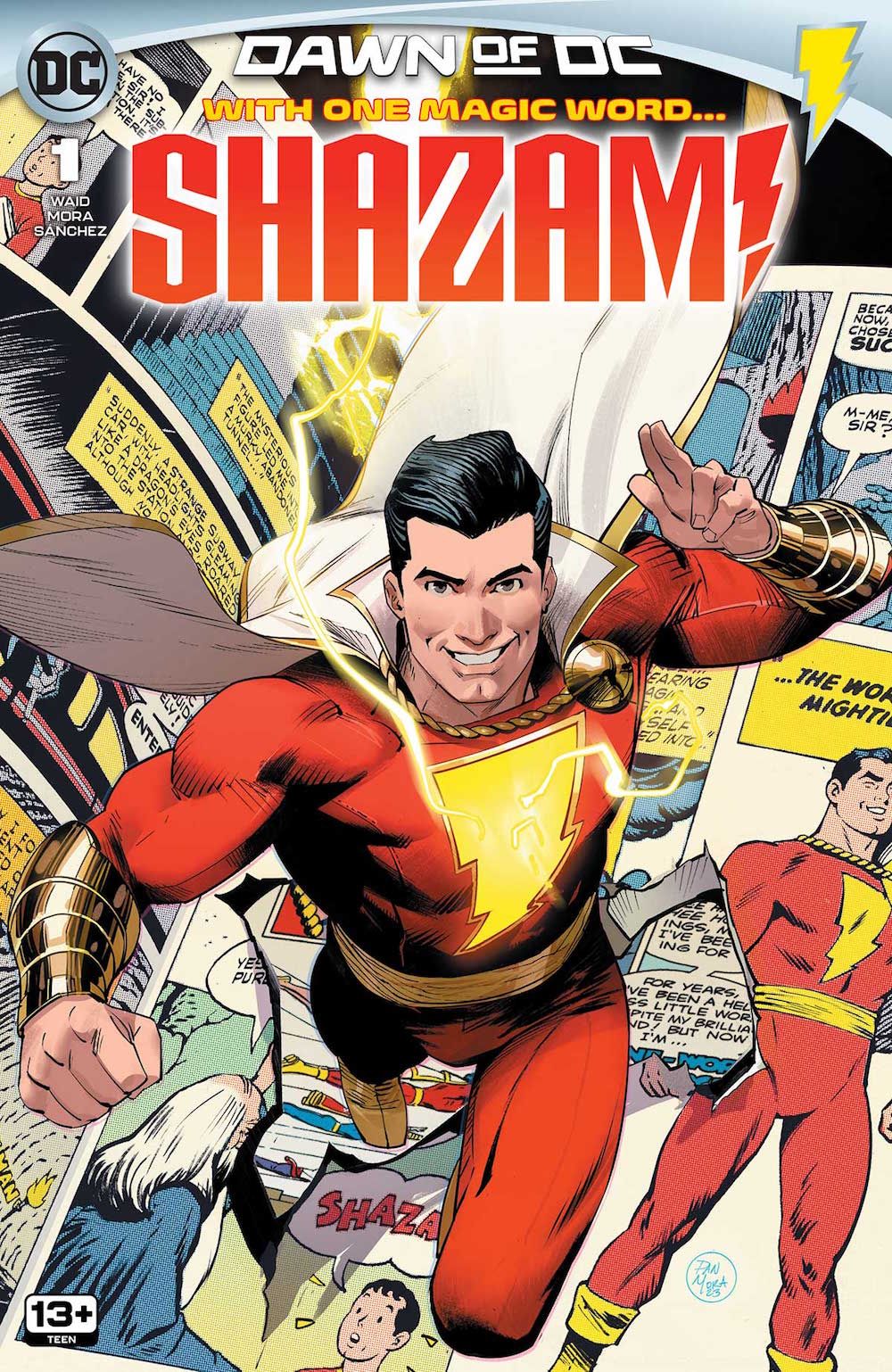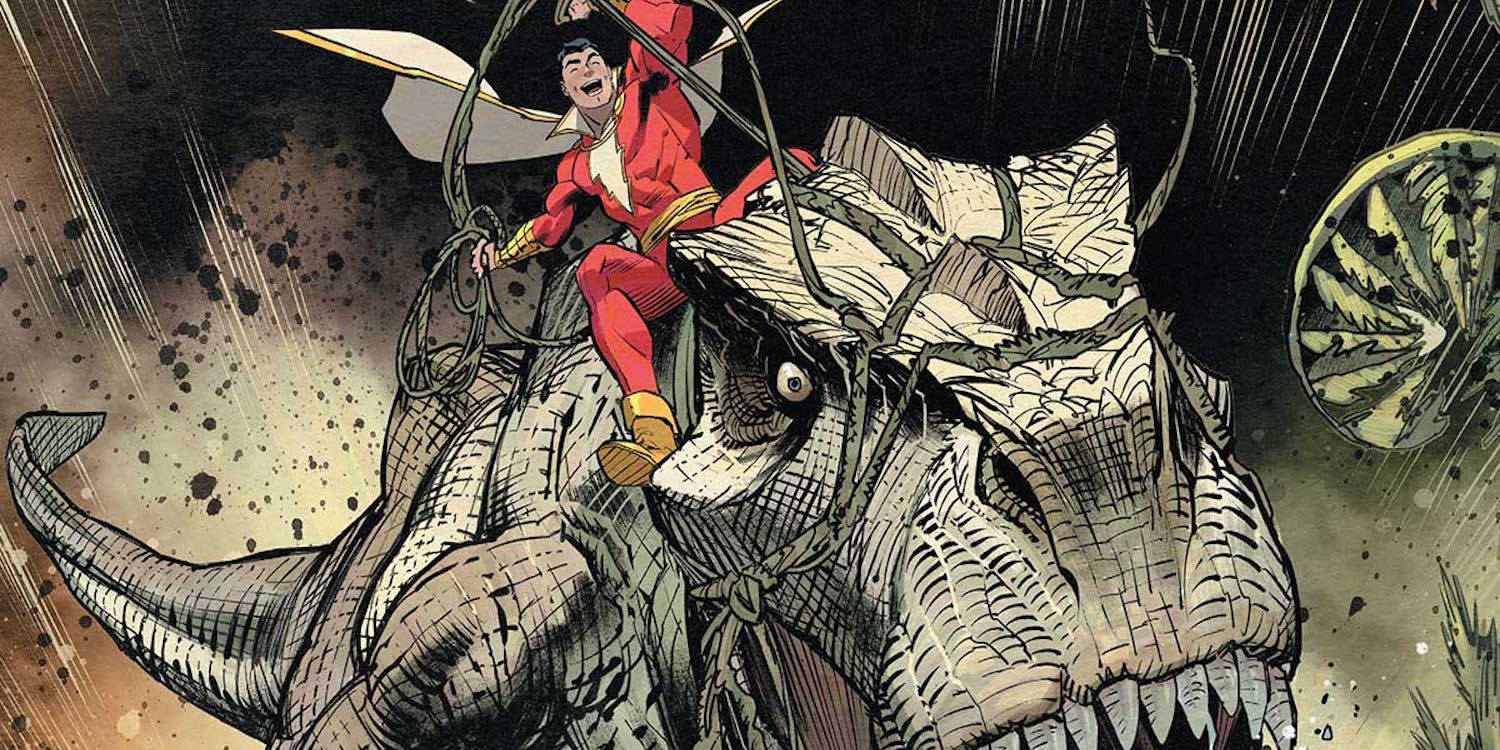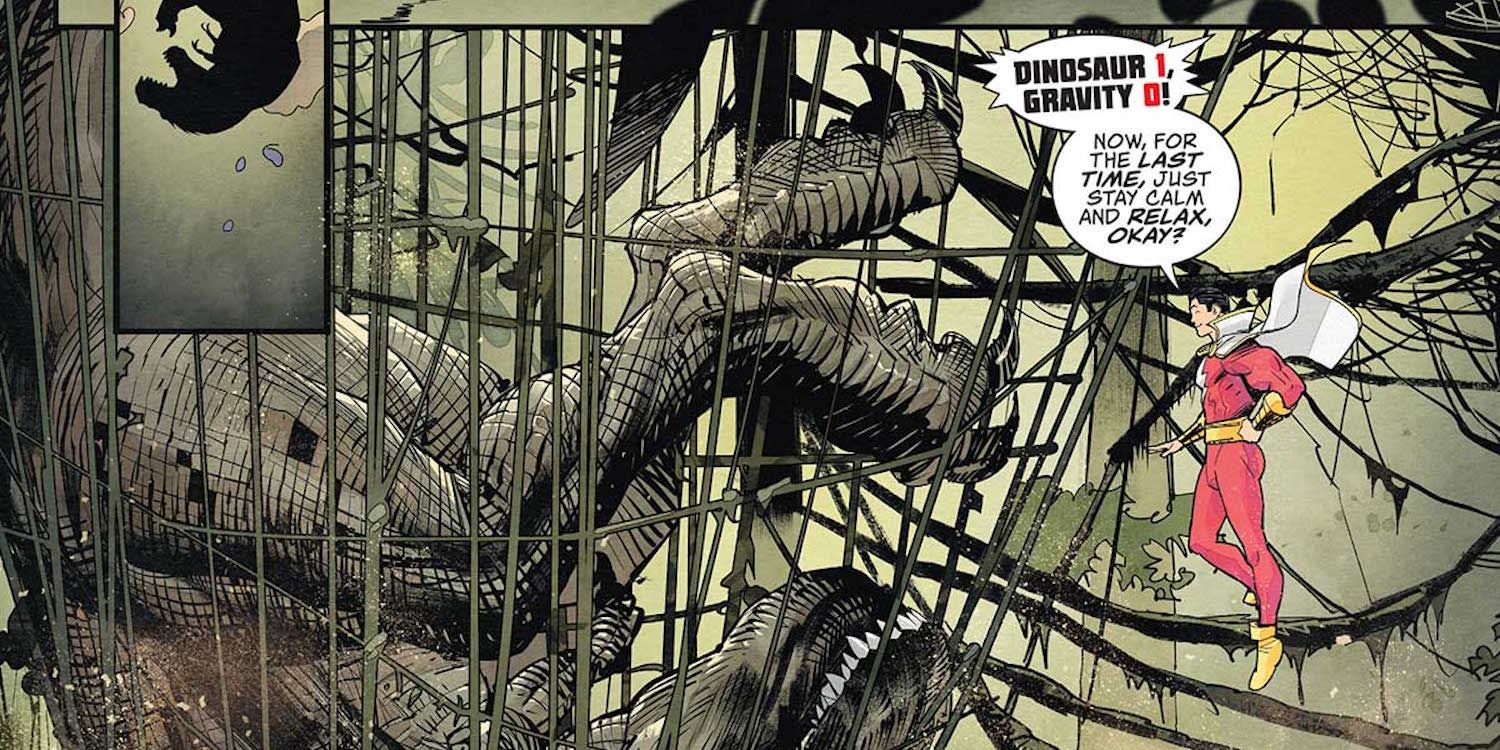Written by Mark Waid, drawn by Dan Mora, with colors by Alejandro Sánchez and letters by Troy Peteri -- Shazam #1 heralds a new dawn for DC hero Billy Batson, aka Shazam, or as his friends now call him, "Captain," thanks to an unflattering marine incident. Billy still has access to the phenomenal powers the wizard gave him, but now thanks to the events of Lazarus Planet, he can no longer share them with his friends. From now on, Shazam has to work solo. What could go wrong?
As Billy fights crime, inspires others as Shazam, and acts as his own positive PR agent on social media as his child self, not everyone is satisfied with how Shazam is using his powers. The young hero's enemies may strike out in the worst possible way at the worst possible time.
Shazam #1 demonstrates a childlike exuberance that's completely on-brand and appropriate for the magical young protagonist. This works in this issue's favor since the premise alone invokes evokes childhood joy, excitement, and absurdity. The debut issue features aliens, dinosaurs, alien dinosaurs, talking tigers, mythical heroes, and grandiose soliloquies on the joys of being human and a hero. Waid has a strong Silver Age sensibility. Shazam #1, with its buoyant tone and subtle intermingling of grandiose heroism with subtle human drama and intrigue, exemplifies a growing movement in comics, steering away from the all-encompassing cynicism of the turbulent 2010s and early 2020s into something akin to the comics of the '50s and '60s. Even letterer Troy Peteri's captions and bubbles harken back to this era of constant narration and traditional storytelling. There is very little irony in this issue. Billy Batson's positivity, innocence, and impressive self-reflection aren't played down or portrayed as weaknesses. Instead, they endear him to the reader, making the series' subtle and sinister setup, made clear by the issue's abrupt ending, all the more shocking.
Plotwise, Shazam #1 devotes most of its time to introducing new readers to Billy Batson, his origins, powers, and double life as foster child and hero. Waid cleverly weaves in the much-needed exposition and narrative in a graceful and seamless manner that matches the upbeat, retro narrative style of this issue and feels perfectly in character for the young Billy. Even fans who are already familiar with Batson's origin will have a fun time reading this issue.
Beyond simply recapping Shazam's origin, this inner-monologue exposition reveals Billy's investment in Shazam as a public figure on social media. Using social media as a plot device might at first appear haphazardly trendy and potentially dated, but this setup works nicely and foreshadows the danger Billy will face as Shazam and as a civillian. It's a subtle bit of social commentary that could have great potential for drama and major ramifications as the plot progresses.
Shazam #1 has bright and colorful visuals complimenting its throwback tone. Mora's line art is classic "superhero," at the balancing point between mature, rendered realism and simplified cartoonish iconography. The latter qualities give this issue its sweet innocence and youthful edge. Shazam #1 boasts a wide array of settings, from the urban to the fantastical, which are intricately rendered and detailed in comparison to the main cast, making this issue easy for readers to immerse themselves in. Sánchez's choice of palette, centered around bold and vibrant primaries, lends to the overall retro and youthful feel. The backgrounds in muted earth tones or stark urban greys further emphasize the brightness of the primary shades in Shazam's costume.
While not exempt from drama and intrigue, Shazam #1 is a wholesome, lovable, and likable reintroduction to a beloved hero, free from irony or posturing, with just enough conflict simmering under the surface to promise a great plot. Waid and Mora kick off their new series with an electrifying first issue.



